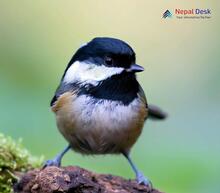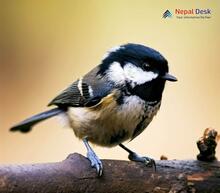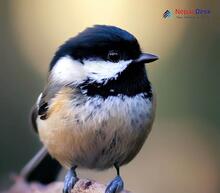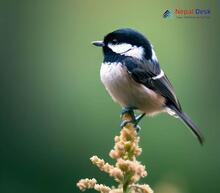Nestled in the majestic Himalayas, Nepal boasts an incredible variety of bird species, enticing birdwatchers and nature enthusiasts from around the world. Among the remarkable bird life in this diverse landscape, the Periparus genus holds a special place. These intriguing members of the Paridae family offer unique insights into the complex ecosystems of Nepal. Here, we will explore the captivating world of the Periparus genus and its significance in Nepal's rich avifauna.
Meet the Periparus Genus: Characteristics and Traits
The Periparus genus comprises a group of small passerine birds, commonly known as tits or titmice. Sporting eye-catching plumage and a characteristic black cap, these birds stand out with their lively behavior and acrobatic displays. Their distinctive song, often heard during the breeding season, adds to their allure.
Mainly found in Asia and Europe, Periparus birds thrive amid diverse habitats ranging from temperate forests to mountainous regions. In Nepal, they are well-adapted to various ecosystems, exhibiting agility and resourcefulness in their constant search for food.
Diet and Feeding Habits
Periparus birds primarily feed on insects, but they also consume seeds and fruits during non-breeding seasons. Thanks to their strong bills, they skillfully extract insect larvae from tree bark or foliage. Their highly adaptable diet enables them to survive harsh weather conditions and fluctuating food availability.
Role in Ecology and Conservation
As insectivores, these charming birds play an essential role in controlling insect populations within their habitat. They contribute significantly to maintaining ecological balance by preying on potential pests that can harm vegetation.
Furthermore, Periparus birds also serve as indicators of environmental change. Their sensitivity to habitat alterations makes them crucial for monitoring ecosystem health—a vital aspect of conservation and management efforts in Nepal.
Get Involved: Tips for Birdwatching in Nepal
To truly appreciate the fascinating world of the Periparus genus, embarking on a birdwatching adventure in Nepal can be an unforgettable experience. Here are a few tips to help you get started:
Choose the right time: Spring and autumn are ideal seasons for birdwatching in Nepal, as they witness heightened bird activity and migration.
Equip yourself: Invest in a good pair of binoculars and a reliable bird field guide to help you identify species as you explore Nepal's breathtaking landscapes.
Stay patient: Observing birds like the secretive Periparus requires patience and a keen eye for detail. Remain observant and ready for unexpected encounters.
In conclusion, the Periparus genus offers a captivating glimpse into Nepal's enchanting bird life. Their presence not only adds to the vibrant array of avian species but also highlights interconnected ecological relationships and the importance of maintaining these delicate balances. As you venture into the Nepalese wilderness, keep an eye out for these lively birds—their acrobatic displays and melodious calls are sure to leave a lasting impression.




